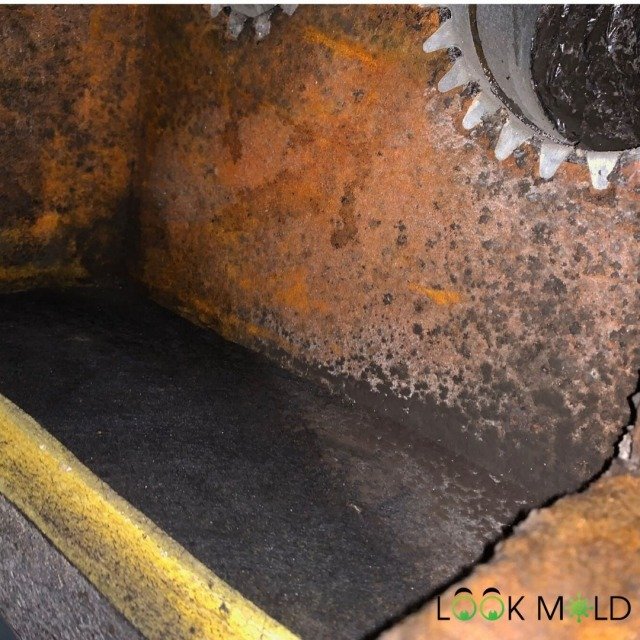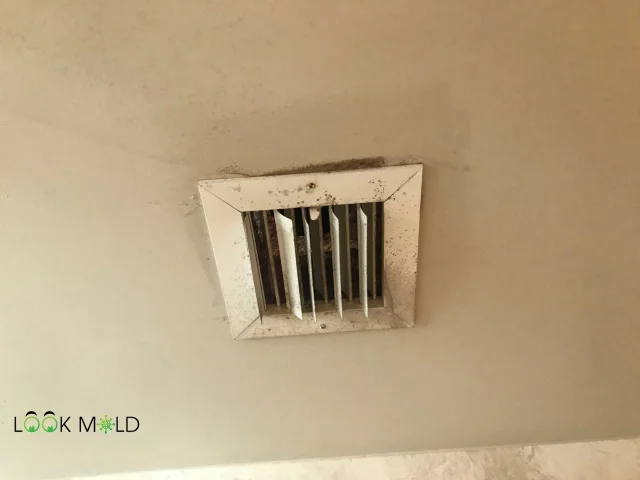Professional Mold Remediation Services
Don't Let Toxic Mold Put Your Family's Health at Risk
Stop mold damage before it spreads. Call now for a free, no-obligation estimate from a local remediation expert.
Free Estimate · Zero Obligation · Available 24/7
Remove Mold in HVAC Systems
Is your HVAC system blowing more than just cool air?
If you've noticed a musty smell, black dust on vents, or unexplained allergy symptoms — you might be dealing with mold in your air conditioner or ductwork.
Mold can grow quickly in HVAC systems, especially when condensation, humidity, or poor ventilation is present. It’s not just gross — it could be hazardous to your health.
In this article, we’ll cover:
- What causes mold in HVAC systems
- Signs you may have mold in your ducts or vents
- Health risks associated with mold in your AC
- How professionals clean HVAC systems safely
- Tips to prevent mold from growing in the first place
🦠 What Causes Mold to Grow in HVAC Systems?
Mold needs three things to thrive: moisture, organic matter, and darkness. Your HVAC system checks all three boxes.
Common causes of mold in AC units:
- Clogged or overflowing drip pans: Water can pool inside your unit.
- Dirty air filters: These can trap moisture and organic debris.
- Leaky ductwork: Allows humid air to enter and condense.
- Improper insulation: Leads to condensation inside ducts.
- Rarely used systems: Stagnant air leads to moisture buildup.

🔍 Signs You Have Mold in Your HVAC System
How do you know if your ducts or vents are moldy? Here’s what to watch for:
- Musty or damp smell when the AC is running
- Visible mold growth around supply vents
- Black dust or spots on vent covers
- Increased allergies or asthma symptoms indoors
- Condensation on ducts, especially in attics or crawlspaces
If you notice any of these signs, it’s time to get your system inspected by a licensed mold assessor.

⚠️ Is Mold in Your AC Dangerous?
Yes — especially if you have allergies, asthma, or a weakened immune system. The EPA states:
“Inhaling or touching mold may cause allergic reactions, asthma episodes, or other respiratory problems.”
— EPA Mold and Health
Even non-toxic molds can produce MVOCs (microbial volatile organic compounds) that irritate your nose, throat, and lungs.
🧼 How Pros Remove Mold from HVAC Systems
Cleaning mold from HVAC ducts isn’t a simple DIY job. In fact, the EPA recommends hiring professionals for mold inside ventilation systems.
Here’s what a proper HVAC mold remediation looks like:
- Inspection & Air Sampling: To determine the mold type and extent.
- Containment: Plastic sheeting and negative air pressure prevent spore spread.
- HEPA Vacuuming: Removes mold spores and debris.
- Cleaning Coils & Drip Pans: With EPA-registered biocides or mold cleaners.
- Duct Cleaning: Using specialized brushes and vacuums.
- Sanitization: Ducts may be fogged with antimicrobial treatments.
- Final Testing: Air samples are retaken to ensure it's mold-free.
Want to see a step-by-step process? Check out our HVAC Mold Remediation Guide
🔍 Signs of Mold in HVAC You Might Overlook
Sometimes mold isn't as obvious as black spots. Here are subtle signs your HVAC system might be contaminated:
- Musty or earthy odor when the AC turns on
- Allergy or asthma symptoms flare up indoors
- Black, white, or green specks on vent grilles
- Excess condensation around ducts or registers
- Unexplained fatigue or headaches at home

⚠️ Dangers of DIY HVAC Mold Removal
While it's tempting to clean vents yourself, here's why it's risky:
- Spore Spread: Opening ducts can blow mold spores through your home
- Damage Risk: AC coils, fans, and duct insulation are easy to damage
- No Containment: Mold cleanup without proper containment can contaminate clean rooms
- Health Risks: Disturbing mold releases spores into the air — especially bad for allergy or asthma sufferers
EPA recommends hiring trained mold remediation professionals for mold in HVAC systems.
💰 Cost to Remove Mold from HVAC Systems
| Service Type | Average Cost |
|---|---|
| Visual Mold Inspection | $200–$400 |
| HVAC Air Duct Cleaning | $300–$1,000 |
| HVAC Mold Remediation | $1,500–$6,000+ |
| Post-Remediation Testing | $200–$600 |
Costs vary by severity, home size, and accessibility of ductwork.
✅ How to Choose an HVAC Mold Removal Pro
Ask these questions before hiring:
- Are you licensed and insured for mold remediation?
- Do you follow EPA and NADCA guidelines?
- Will you perform pre- and post-remediation testing?
- Do you use containment and HEPA filtration during removal?
- Can you provide references or case studies?
Don’t just hire a duct cleaner — hire a mold expert with HVAC experience.
🌬️ How to Prevent Mold in AC Vents (Quick Checklist)
- ✅ Use HVAC filters rated MERV-11 or higher
- ✅ Run your AC 20 minutes longer after showers or cooking
- ✅ Use UV light systems inside your air handler
- ✅ Clean AC coils and drip pans at least once a year
- ✅ Seal and insulate ductwork in attics or crawl spaces
- ✅ Keep indoor humidity below 50%
📚 Helpful Resources
- How to Clean Mold from Air Ducts
- Our Complete Mold Prevention Guide
- Signs You Have Mold in Your Home
❓ FAQ
Is mold in HVAC systems dangerous?
Yes. Mold in air ducts can release spores into your home’s air. According to the EPA, this can cause respiratory issues, allergic reactions, and asthma attacks — especially in sensitive individuals.
Can I clean mold from my vents myself?
For small surface mold on grilles, yes — but mold inside ducts or air handlers should only be cleaned by professionals. DIY cleanup can make things worse if spores spread through your system.
How much does it cost to clean mold from HVAC?
Costs range from $300 to over $6,000 depending on the size of your system and how far the mold has spread. Most homes pay around $1,500–$2,500 for professional HVAC mold remediation.
What causes mold in HVAC systems?
Mold grows when moisture and organic debris collect inside ducts or AC units — especially with clogged drain pans, high humidity, or dirty filters.
How do I keep mold from growing in my AC?
Use a dehumidifier, clean coils and drip pans regularly, and keep vents clear. Run your system regularly and make sure your condensate drain is flowing freely.
Explore Related Topics:
Notice an update we should make?
We strive for accuracy. Contact us here if you see incorrect or outdated info on this page.
